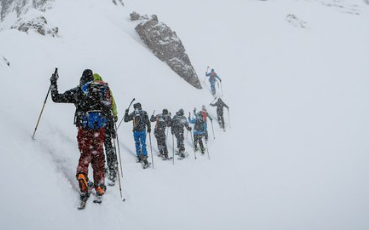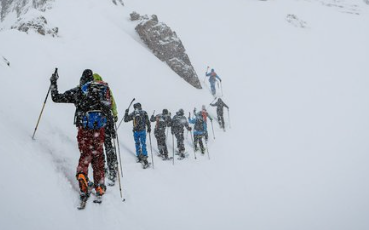
Mont Blanc plunges to –17.7 °C, snow coats high peaks amid cold wave
In an unprecedented July cold event, the highest peaks of Central and Eastern Europe have been thrust into full winter conditions. On Mont Blanc, the temperature dropped to an astounding –17.7 °C, while fresh snowfall blanketed the Alps and Carpathians down to 1800 meters above sea level — at a time of year when high-altitude pastures are usually teeming with hikers, not snowflakes.
Extreme Cold in the High Alps
At Mont Blanc’s summit (4,808 m), temperatures typically remain sub-freezing year-round, but such an extreme mid-summer low is extraordinary. On the night of 9 July 2025, readings plunged below –17 °C, with strong winds pushing wind chill values to levels typical of midwinter arctic conditions.
Several high-altitude weather stations in the Western Alps and Tyrolean region recorded temperatures between –10 °C and –14 °C, confirming the presence of intensified cold advection within the upper-level trough.
July Snowfall at 1800 MASL
The freezing level — normally found above 3000 m in July — sank to below 2000 m across parts of Austria, Switzerland, northern Italy, Slovakia, and southern Poland. This brought moderate snowfall accumulations to:
- Hohe Tauern, Stubai Alps, Valais, and Bernese Oberland
- Tatra Mountains (Poland/Slovakia)
- Southern Carpathians (Romania)
Photos from refuges and ski lifts at altitudes near 1800 m showed snow-covered trails, frost on grass, and even whiteout conditions during early hours.
This is exceptionally rare, as snow at this elevation in July occurs only during deep synoptic lows with strong Arctic feed, and even then, melts rapidly — but in this case, daytime highs barely reached 2–4 °C, allowing snow to persist for more than 24 hours.
Meteorological Explanation
This event was triggered by a cut-off cold-core low aloft, centered over Bavaria and Austria, reinforced by north-northwest flow from Greenlandic and Arctic sectors. At 500 hPa, temperatures fell to –25 °C, steepening lapse rates and lowering the freezing level rapidly.
Moisture influx from the Mediterranean added to the mix, creating orographic lifting, cloud build-up, and convective snow bursts above 1700–1800 m.
Such summer snow events typically follow negative NAO patterns, blocked Atlantic flow, and jet stream meanders — all present in July 2025.
Climatic and Symbolic Meaning
While media speak of extremes, alpine communities recall “snow blessings” and weather omens. In ancient lore, summer snow symbolized a pause in time, a heavenly correction, or even a celestial cleansing.
For shepherds and pilgrims, snow in July was not a threat — it was sacred contradiction, a reminder that nature still speaks in riddles, and sometimes, resets the balance in ways not forecasted.
In an age of global heating, this chilling interlude may not reverse the warming tide, but it etches a white scar across summer’s face, reminding us that the atmosphere holds both fire and frost.

Source: Cornelius Muller / X


























